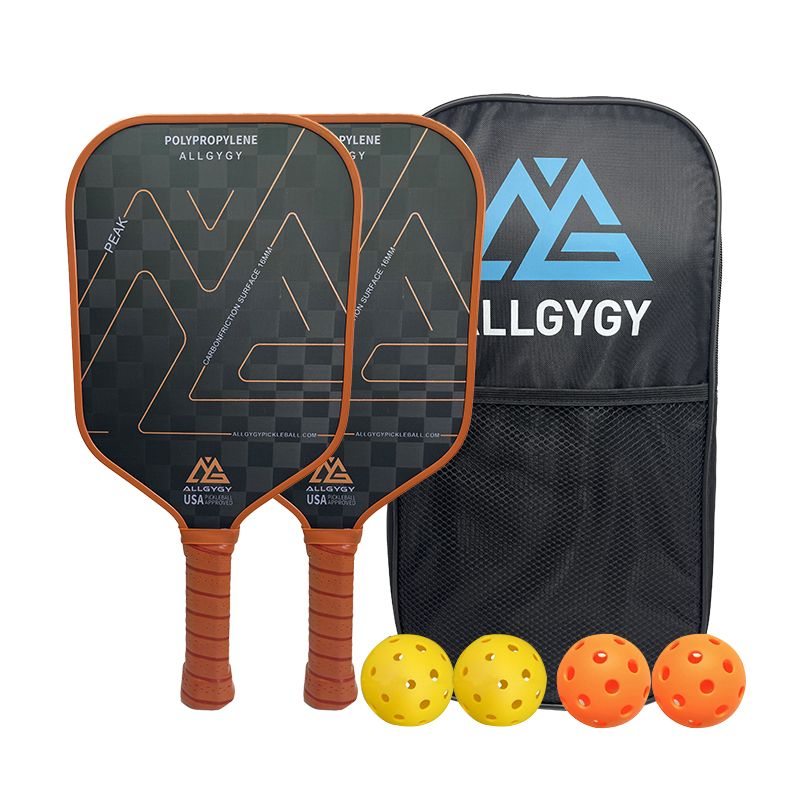
- English
- Español
- Português
- русский
- Français
- 日本語
- Deutsch
- tiếng Việt
- Italiano
- Nederlands
- ภาษาไทย
- Polski
- 한국어
- Svenska
- magyar
- Malay
- বাংলা ভাষার
- Dansk
- Suomi
- हिन्दी
- Pilipino
- Türkçe
- Gaeilge
- العربية
- Indonesia
- Norsk
- تمل
- český
- ελληνικά
- український
- Javanese
- فارسی
- தமிழ்
- తెలుగు
- नेपाली
- Burmese
- български
- ລາວ
- Latine
- Қазақша
- Euskal
- Azərbaycan
- Slovenský jazyk
- Македонски
- Lietuvos
- Eesti Keel
- Română
- Slovenski
- मराठी
- Srpski језик
How do Carbon Fiber Pickleball Paddles Become Top Choices for Players by Addressing Traditional Paddle Flaws?
2025-09-23
As pickleball gets more popular in both casual and competitive settings, players’ demands for paddle performance keep going up gradually.Traditional aluminum alloy and wooden paddles can’t easily meet diverse needs. This is because they have problems like being heavy, easy to deform, and bad at ball control.But carbon fiber pickleball paddles have made progress in feel, durability, and maneuverability. This is thanks to their material properties, so they’ve become the top choice for players—from beginners to professionals.Their core advantages are reshaping the user experience in pickleball.

1. Lightweight Design: No Fatigue After Long Play, Suitable for All Groups
Carbon fiber itself has a low density, making the resulting pickleball paddles lighter than traditional aluminum alloy paddles—they feel lightweight in the hand, with no oppressive grip. Even players with less strength, such as women, teenagers, or middle-aged and elderly casual players, won’t experience arm soreness or stiff wrists after playing continuously for half an hour. Lightweight also boosts paddle swing speed: when facing fast returns, players can adjust the paddle face angle more flexibly. This reduces reaction delays caused by heavy paddles.Whether handling close-net dinks or long-court counterattacks, players can respond with ease. And this lowers the sport’s entry barrier while enhancing how smooth matches are.
2. High Strength & Durability: Shock/Impact Resistant, Longer Lifespan
In pickleball, paddles will definitely run into situations like hitting the ground, crashing into the net, or lightly touching opponents’ paddles.Carbon fiber paddles have high strength, so they can stand small impacts during daily use. This avoids problems that other materials often have—like dents and deformation in aluminum alloy paddles, or cracks and chips in wooden paddles.Even if you drop them by accident (not including very violent impacts), the paddle’s frame and surface stay mostly undamaged. So you don’t need to replace paddles often.This makes them especially good for using outdoors a lot, or for "accidental mistakes" when beginners practice. And they offer better long-term cost-effectiveness.
3. Excellent Elasticity: Smooth Power Transfer, More Powerful Returns
Carbon fiber inherently possesses excellent elasticity and toughness. When hitting the ball, it naturally cushions the impact while quickly rebounding to transfer force, allowing players to hit more powerful returns without excessive force. Long-range shots can easily reach the opponent's backcourt, reducing the risk of incorrect posture caused by excessive force. During gentle close-net drives, the elasticity helps control force and prevent the ball from going out of bounds after passing the net. This "combination of hardness and softness" helps beginners quickly master power generation techniques, while also helping advanced players better execute tactics, improving the quality of their returns and their scoring opportunities.
4. High Stability: Precise Ball Control, Fewer Mistakes
Carbon fiber paddles have uniform surface rigidity; the paddle face rarely deforms when hitting the ball, accurately transmitting the player’s hand movements. When aiming for cross-court shots, the stable paddle face angle ensures the ball trajectory rarely deviates. When handling spin shots, it also better absorbs the ball’s spin, reducing uncontrolled returns caused by paddle face wobble. This stability is particularly important for intermediate and advanced players: whether practicing precise control or competing in tournaments, it lowers error rates, ensures better tactic execution, and boosts confidence and satisfaction during matches.
| Comparison Dimension | Carbon Fiber Pickleball Paddles | Traditional Aluminum Alloy Paddles | Traditional Wooden Paddles |
|---|---|---|---|
| Weight & Feel | Lightweight, no fatigue after long play | Heavy, prone to arm soreness | Medium weight, but feels heavy in grip |
| Durability | Shock/impact resistant, no deformation | Prone to dents, deformation over time | Prone to cracks/chipping, moisture-sensitive |
| Elasticity & Force Transfer | Good rebound, smooth power transfer | Poor elasticity, requires more force | Uneven elasticity, easy force loss |
| Ball Control Stability | Uniform surface rigidity, precise control | Wobbly face, trajectory deviation | Average stability, worse when moist |
| Suitable Players | All groups (beginners/professionals/casual) | Only suitable for players with strong strength | Temporary use for beginners |
Currently, carbon fiber pickleball paddles are evolving toward "detail optimization": some brands add non-slip sweat-absorbent foam to the handle for better grip comfort; others use special textured designs on the paddle surface to enhance ball-hitting friction, further improving control. Whether for casual recreation or competitive improvement, the four core advantages of carbon fiber pickleball paddles provide players with higher-quality sports experiences, serving as a key driver for the popularization of pickleball.


